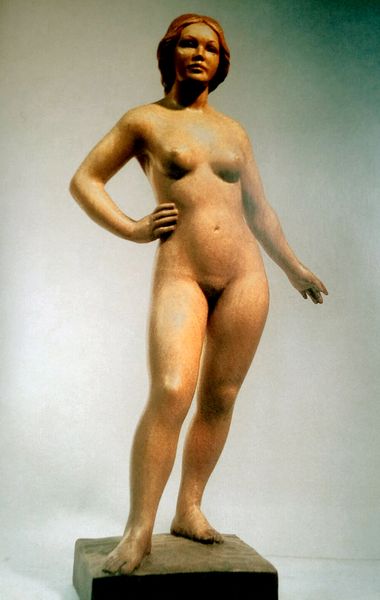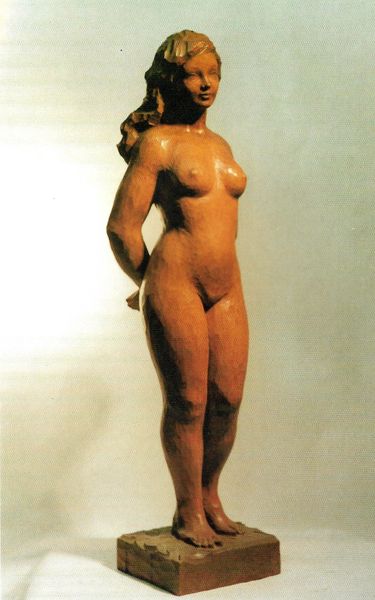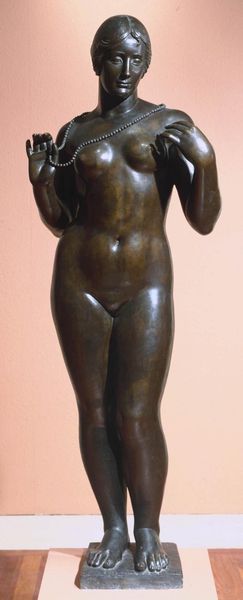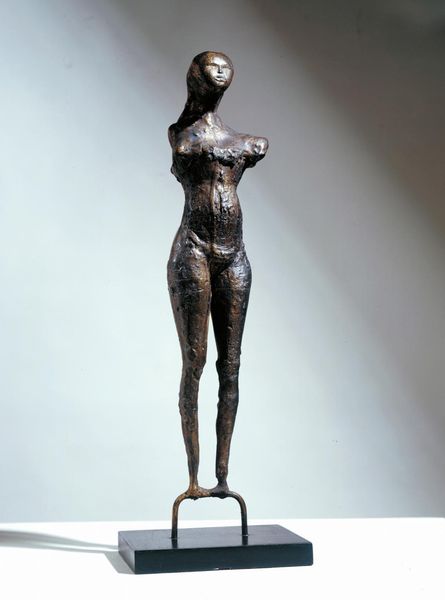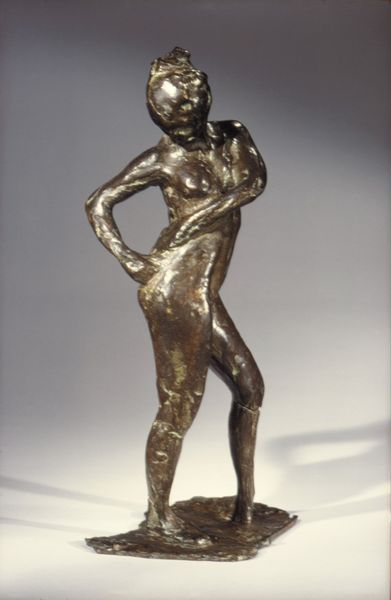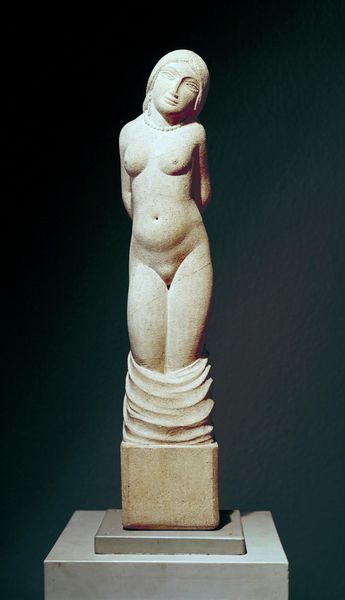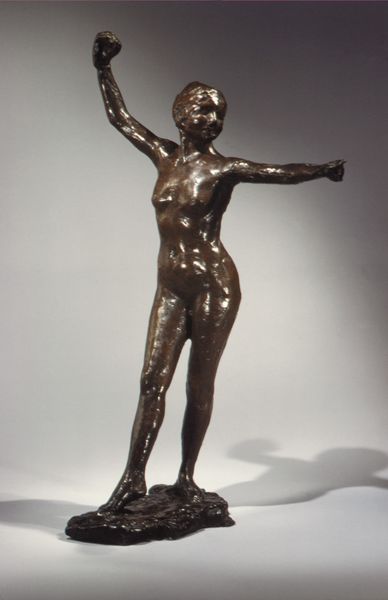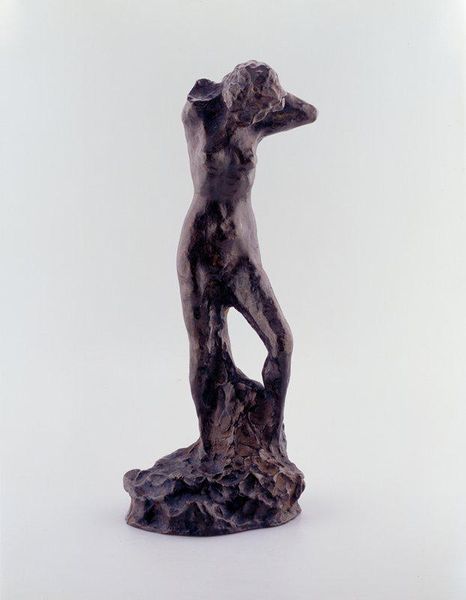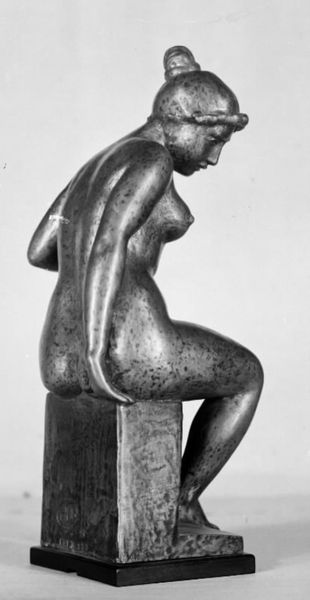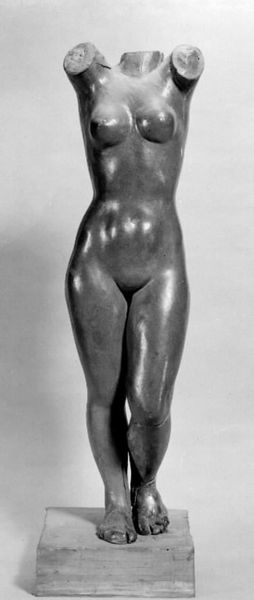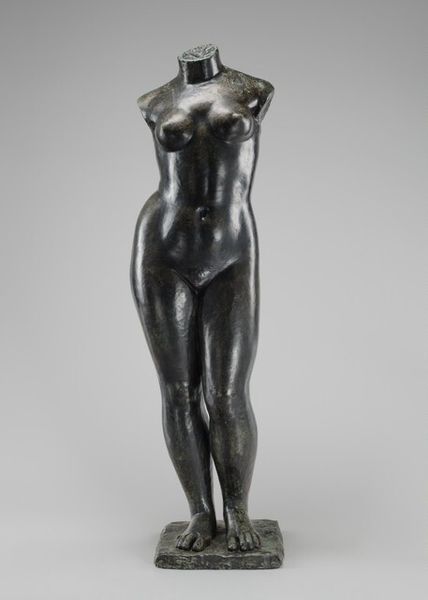
bronze, sculpture
#
sculpture
#
bronze
#
figuration
#
female-nude
#
sculpture
#
nude
#
realism
Copyright: Public domain
Anders Zorn made this bronze sculpture, ‘The Broken Pot’, at the end of the 19th Century, at a time when academic conventions still dominated the art world. Zorn was Swedish, but spent much of his time in London and Paris. He was an establishment figure; celebrated for his society portraits. But he also had a fascination with the lives of ordinary people, particularly women working in rural settings. This sculpture presents an intriguing mix of genres. On the one hand, there is the classical nude, referencing a long tradition of allegorical and mythological figures. On the other, there is the suggestion of everyday life, with the broken pot implying some kind of labour. What does it mean to bring these two worlds together? Does it elevate the status of working women, or does it simply aestheticize their hardship? To answer such questions, art historians explore sources such as exhibition reviews, artists’ letters, and sociological studies of the period. These help us to understand the complex social and institutional contexts in which art is produced and received.
Comments
No comments
Be the first to comment and join the conversation on the ultimate creative platform.
